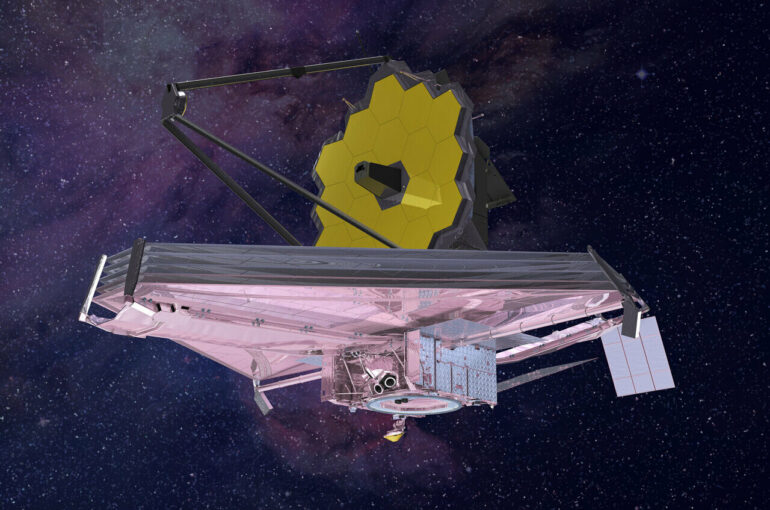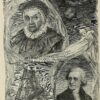NASA’s James Webb Space Telescope is now experiencing all seasons—from hot to cold—as it undergoes the thermal stability test. Meanwhile, activities are underway for the final phase of commissioning: digging into the details of the science instruments, the heart of Webb. To complete commissioning, we will measure the detailed performance of the science instruments before we start routine science operations in the summer.
Today, the lead commissioning scientist for Webb, Scott Friedman of the Space Telescope Science Institute (STScI), gives us all the details on this final phase of commissioning.
“With the telescope beautifully aligned and the observatory near its final cryogenic temperature, we are ready to begin the last group of activities before the science observations start: science instrument commissioning. Here I describe just a few of those activities.
“The instruments, the Near-Infrared Camera (NIRCam), Near-Infrared Spectrometer (NIRSpec), Near-Infrared Imager and Slitless Spectrometer (NIRISS), Mid-Infrared Instrument (MIRI), and the Fine Guidance Sensor (FGS) have been powered up and safely cooled. We have operated their mechanisms and detectors, including filter wheels, grating wheels, and the NIRSpec microshutter assembly. The Webb optics team used images of isolated stars taken with each of the instruments to align the primary and secondary mirrors of the observatory. But we have more work to do before Webb is fully ready to embark on the ambitious science observations that will reveal the secrets of the universe.
“We will now begin an extensive suite of calibrations and characterizations of the instruments using a rich variety of astronomical sources. We will measure the instruments’ throughput—how much of the light that enters the telescope reaches the detectors and is recorded. There is always some loss with each reflection by the mirrors of the telescope and within each instrument, and no detector records every photon that arrives. We will measure this throughput at multiple wavelengths of light by observing standard stars whose light emission is known from data obtained with other observatories combined with theoretical calculations.
“The astrometric calibration of each instrument maps the pixels on the detectors to the precise locations on the sky, to correct the small but unavoidable optical distortions that are present in every optical system. We do this by observing the Webb astrometric field, a small patch of sky in a nearby galaxy, the Large Magellanic Cloud. This field was observed by the Hubble Space Telescope to establish the coordinates of about 200,000 stars to an accuracy of 1 milli-arcsec (less than 0.3 millionths of a degree). Calibrating this distortion is required to precisely place the science targets on the instruments’ field of view. For example, to get the spectra of a hundred galaxies simultaneously using the NIRSpec microshutter assembly, the telescope must be pointed so that each galaxy is in the proper shutter, and there are a quarter of a million shutters!
“We will also measure the sharpness of the stellar images, what astronomers call the ‘point spread function.’ We already know the telescope is delivering to the instruments image quality that exceeds our prelaunch expectations, but each instrument has additional optics. These optics perform a function, such as passing the light through filters to get color information about the astronomical target or using a diffraction grating to spread the incoming light into its constituent colors. Measuring the point spread function within each instrument at different wavelengths provides an important calibration for interpreting the data.
“We will test target acquisition for each instrument. For some observations, it is sufficient to point the telescope using the position of a guide star in the Fine Guidance Sensor and know the location of the science target relative to that guide star. This places the science target to an accuracy of a few tenths of an arcsecond. However, in some cases more precision is necessary, approximately a hundredth of an arcsecond. For example, for coronagraphy, the star has to be placed behind a mask so its light is blocked, allowing the nearby exoplanet to shine through. In time series observations, we measure how an exoplanet’s atmosphere absorbs the stellar light during the hours it takes to pass in front of its star, allowing us to measure the properties and constituents of the planet’s atmosphere. Both of these applications require that the instrument send corrections to the telescope pointing control system to put the science target precisely in the correct location within the instrument’s field of view.
“A final example of our instrument commissioning activities is observations of moving targets. Most astronomical objects are so far away that they appear to be stationary on the sky. However, this is not true of the planets, satellites and rings, asteroids, and comets within our own solar system. Observing these requires that the observatory change its pointing direction relative to the background guide stars during the observation. We will test this capability by observing asteroids of different apparent speeds using each instrument.
“We are now in the last two months of Webb’s commissioning before it is fully ready for its scientific mission. We still have important properties and capabilities of the instruments to test, measure, and demonstrate. When these are complete, we will be ready to begin the great science programs that astronomers and the public alike have been eagerly awaiting. We are almost there.”
Citation:
Examining the heart of Webb: The final phase of commissioning (2022, May 6)



